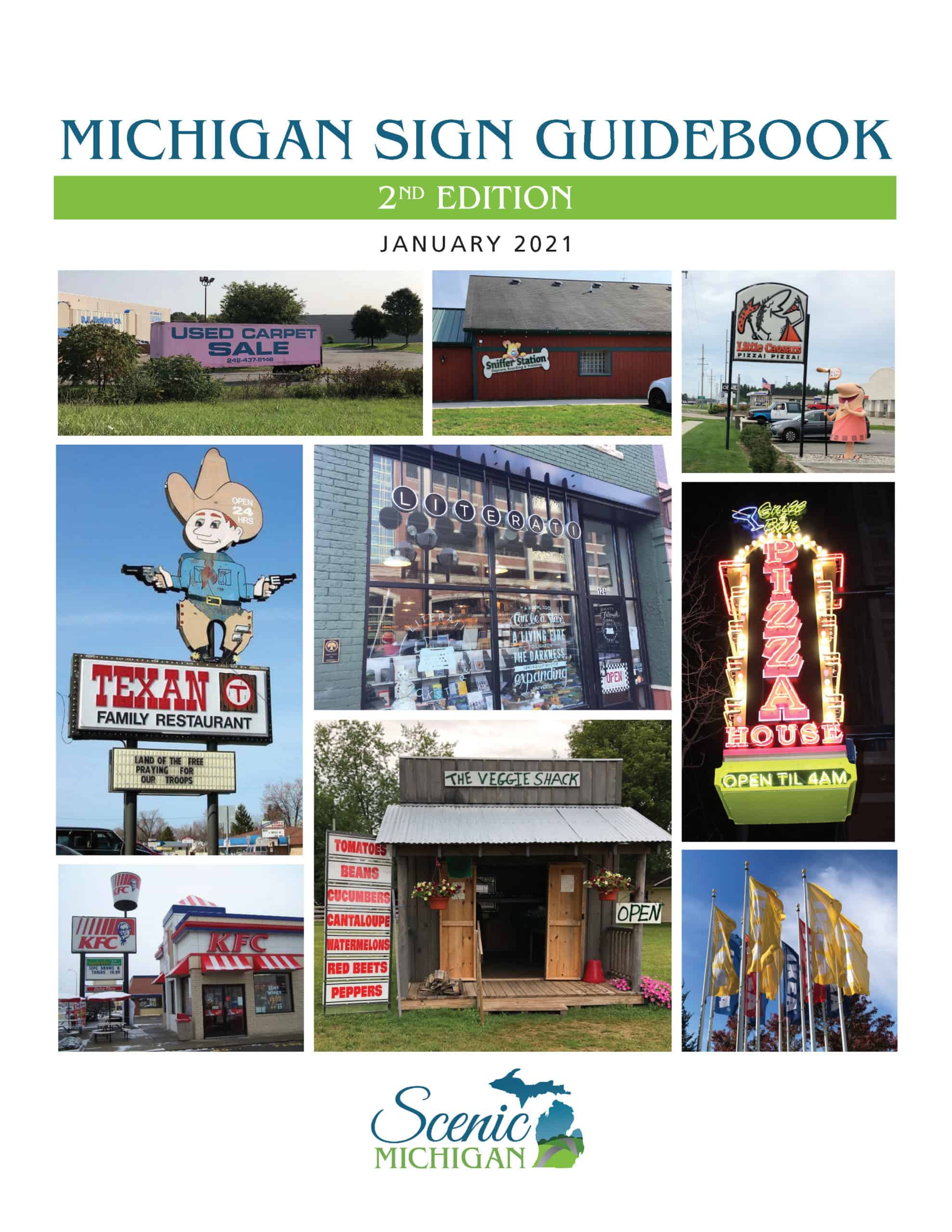The Scenic Michigan Board of Directors has elected Peter A. Letzmann as President, effective January 13, 2022. Most recently, Mr. Letzmann was Scenic Michigan’s Vice President and member of its Board of Directors. Mr. Letzmann is an attorney, mediator, educator, and consultant; has 50 years of experience in government law….
Billboards and Sign Control
A community with too many signs, signs that are too large, have too much motion, too many flashing lights, are in poor locations, are too small to read, or are so large they are overpowering, is a community that not only functions poorly (there is too much clutter, making wayfinding, instruction and identification difficult), but also looks bad. If a community looks bad, then it is a less desirable place to be—to live, work or invest in.
Scenic Michigan is interested in helping local communities developing sign ordinances that enhance community aesthetics and protect the health, safety, and welfare of residents.




